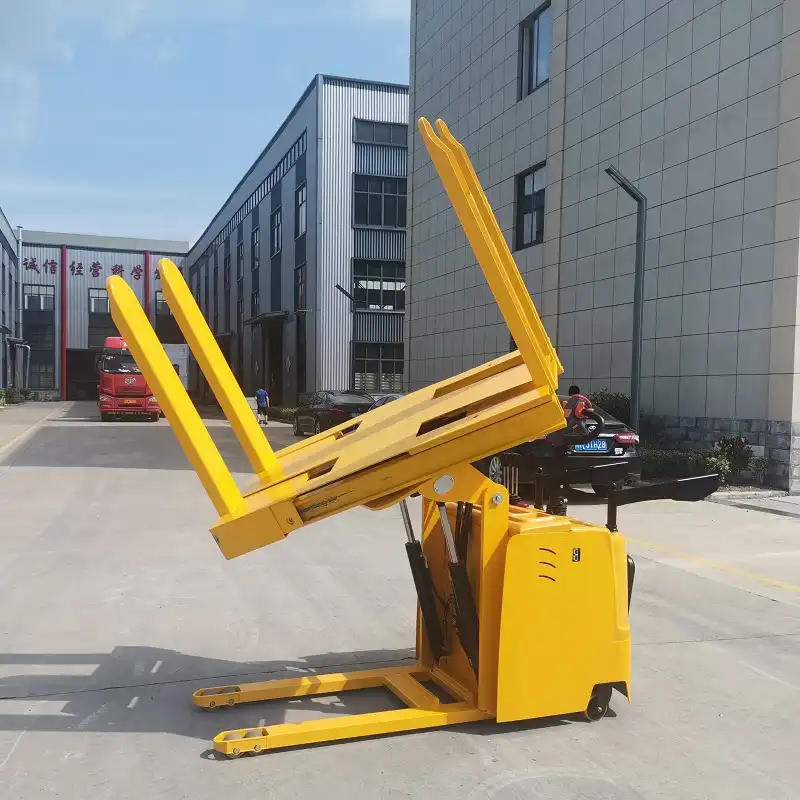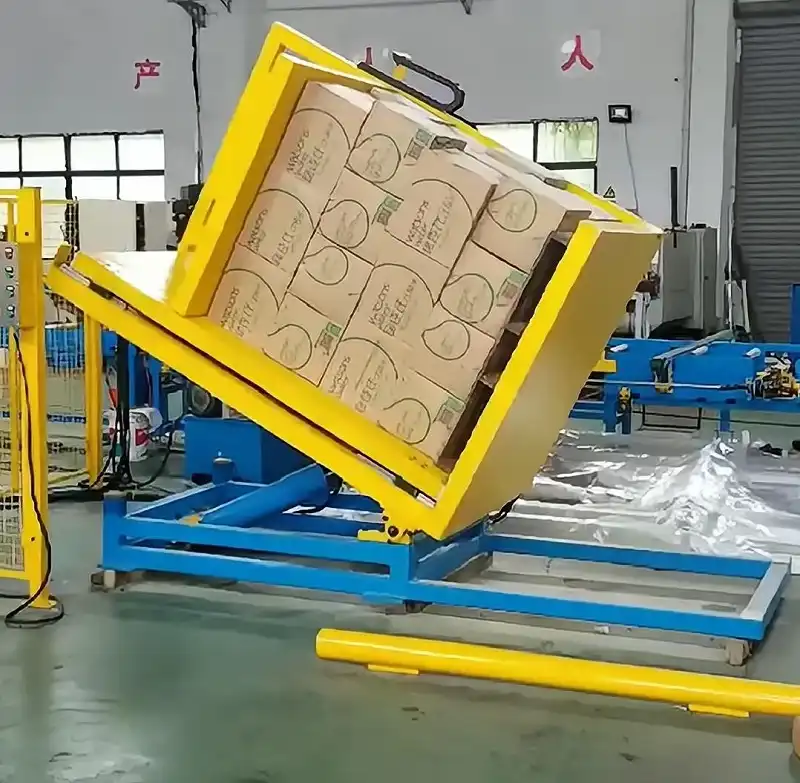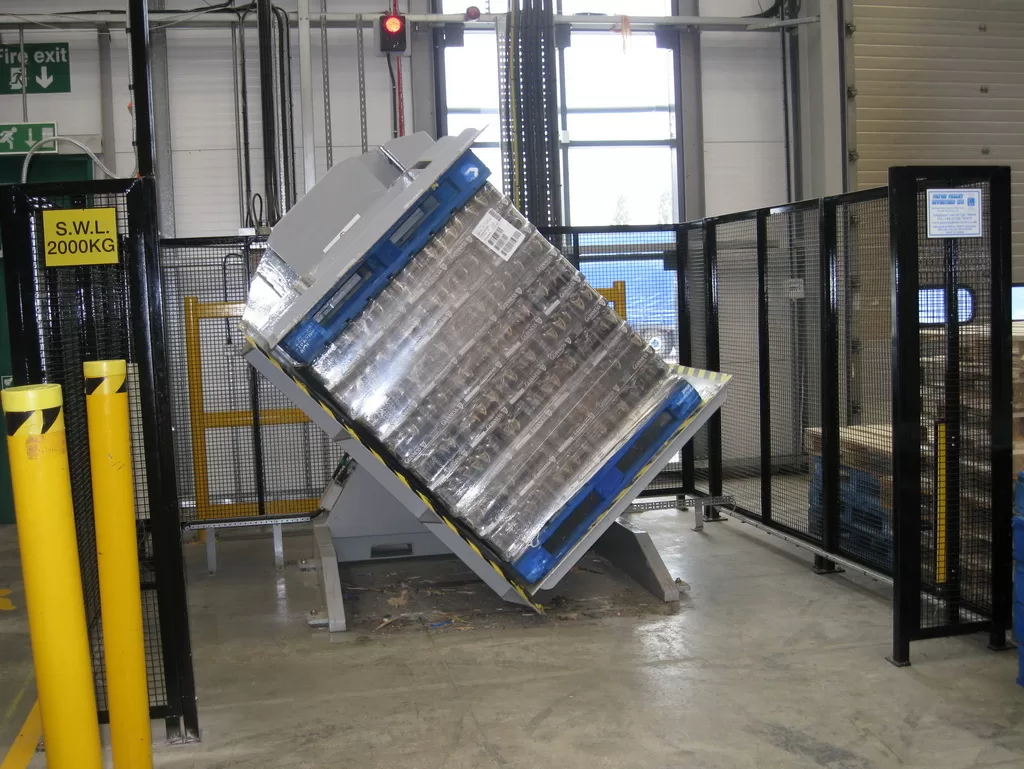Pallet Exchanger Machine: Revolutionizing Material Handling
When it comes to material handling in industries, efficiency and precision are the cornerstone of any operation. One machine that is rapidly becoming a staple in warehouses, distribution centers, and manufacturing plants is the pallet exchanger machine. With its ability to automate the process of swapping pallets, it reduces the time spent on manual labor, minimizes human error, and enhances the overall workflow. But how exactly does a pallet exchanger machine work, and why should you consider incorporating one into your business? Let's dive into the features, benefits, and real-world applications of this technology.
The need for pallet exchangers has grown alongside the increasing demand for faster, safer, and more cost-effective operations. With the automation trend in full force, businesses are turning to pallet exchangers to streamline their supply chain processes. Imagine a situation where you need to transfer products from a damaged pallet to a fresh one, or when products need to be stored or shipped on specific types of pallets. This task, which was once done manually and could take up precious time and labor, can now be efficiently completed in a matter of seconds with the right equipment. In this article, we'll explore how pallet exchangers are changing the landscape of logistics and warehousing.
But, how exactly do pallet exchanger machines work, and what makes them so indispensable for modern-day industries? This is what we'll explore in the sections below, providing a deep dive into the benefits, functions, and considerations before investing in a pallet exchanger machine.

1. What is a Pallet Exchanger Machine?
1.1 Understanding the Basics
A pallet exchanger machine is a piece of automated equipment designed to quickly and efficiently swap one pallet for another. Whether it’s due to pallet damage, specific pallet requirements, or the need to change to a different type of pallet for storage or shipping purposes, a pallet exchanger can make the process faster and safer. These machines are built to handle various types of pallets, from wooden to plastic or even metal, making them incredibly versatile for different industries, including logistics, pharmaceuticals, and food production.
1.2 How Do Pallet Exchanger Machines Operate?
Pallet exchanger machines operate using a set of simple yet highly effective processes. First, the machine lifts and secures the product, which is currently on a pallet. Then, the pallet is automatically swapped with a new one without having to manually unload the goods. This is done with the help of hydraulic systems, conveyors, or robotic arms, depending on the complexity of the machine. The pallet exchanger machine ensures that the load remains intact, with minimal human intervention required.
By using these machines, businesses can save significant time and effort. Instead of having to rely on manual labor to switch pallets, the machine completes the task quickly and efficiently, ensuring the products are safe and secure during the transfer. Additionally, the integration of automation reduces human errors, improving accuracy and reliability.
1.3 Why Do Companies Invest in Pallet Exchanger Machines?
One of the main reasons companies invest in pallet exchanger machines is to improve the overall efficiency of their operations. For instance, manually changing pallets can take up time and increase the risk of damaging goods. The automation that pallet exchanger machines provide helps to eliminate these problems by completing the task faster and with greater precision.
Another reason is cost-effectiveness. While the initial investment may seem high, the long-term savings are substantial. With fewer labor hours required for pallet exchanges and a reduction in the risk of damaged products, the return on investment is often achieved quickly.
2. How Does a Pallet Exchanger Work?
2.1 Step-by-Step Process of a Pallet Exchange
The operation of a pallet exchanger is simple yet highly effective. First, the pallet with the product is positioned on the machine. Sensors detect the presence of the pallet and initiate the swapping process. The pallet exchanger grabs the product, lifts it, and places it on a new pallet that has been automatically aligned for the exchange. Depending on the design of the machine, the transfer process may involve a conveyor belt, lift, or robotic arms to handle the load.
2.2 Technology Behind Pallet Exchanger Machines
The technology behind pallet exchanger machines often integrates sophisticated control systems, sensors, and automation. The sensors help in detecting the size, weight, and type of the load, ensuring that the correct pallet is used for each exchange. The control system coordinates the lifting mechanism, which is usually powered hydraulically or with electric motors, ensuring a smooth and controlled transfer.
Some advanced models even feature robotic arms capable of handling more delicate items, offering extra flexibility for industries that deal with fragile goods. For instance, in pharmaceutical or food industries, where maintaining the integrity of the product is crucial, a robotic pallet exchanger machine would be an ideal choice.
2.3 What Makes Pallet Exchanger Machines Different from Manual Methods?
The key distinction between pallet exchanger machines and traditional manual methods is speed and accuracy. Manual pallet changing involves multiple steps: unloading the goods, switching pallets, and then reloading. This takes significant time, and depending on the size and weight of the items, can lead to physical strain on workers and a higher chance of errors.
In contrast, a pallet exchanger machine can perform all these steps within seconds, with precision. The automation also leads to reduced labor costs and fewer product damages, enhancing the overall operational workflow. It’s a process that not only increases productivity but also boosts employee safety by reducing the risk of lifting-related injuries.

3. Why Should You Use a Pallet Exchanger Machine?
3.1 Improving Efficiency in Operations
Pallet exchanger machines are a game-changer when it comes to increasing efficiency in warehouse or factory operations. They eliminate the time-consuming manual task of swapping pallets, allowing your team to focus on other critical tasks. Instead of spending time handling pallets and moving goods manually, workers can oversee the automatic process, ensuring everything runs smoothly.
Additionally, pallet exchanger machines can work continuously without taking breaks, unlike human labor, which further speeds up operations. This makes them perfect for industries where constant turnover of goods is essential.
3.2 Reducing Labor Costs
By automating the pallet exchange process, businesses can reduce their dependence on manual labor. This leads to significant cost savings over time. With fewer laborers needed for pallet exchanges, your staff can be allocated to other essential duties, enhancing overall productivity.
Moreover, by reducing human error, pallet exchangers prevent potential damage to products that may occur due to improper handling. Fewer mistakes also mean fewer resources spent on correcting issues, further driving down operational costs.
3.3 Maintaining Safety Standards
Manual pallet handling can be a hazardous task, especially in high-volume environments. Workers are at risk of injuries related to lifting, carrying, or operating machinery. By using a pallet exchanger machine, companies can minimize these risks, providing a safer working environment for their employees.
Automation, combined with built-in safety features like emergency stop buttons, sensors to detect obstacles, and mechanisms to prevent mishandling, ensures that the process is as safe as possible. This, in turn, reduces workplace injuries and the associated costs of medical claims and insurance premiums.
4. What Are the Benefits of Pallet Exchanger Machines in Warehouses?
4.1 Enhanced Space Utilization and Workflow Optimization
In many warehouses, space is at a premium, and maximizing the storage capacity is essential for maintaining an efficient operation. Pallet exchanger machines play a crucial role in optimizing space usage by allowing for faster turnover of goods. The automated nature of the pallet exchange process means that products are quickly moved onto fresh pallets, ready for storage or shipment.
The workflow in a warehouse can be significantly improved by the ability to immediately switch out pallets. For instance, if a warehouse needs to handle a high volume of incoming stock, the pallet exchanger can keep the flow of goods moving swiftly through the system, reducing bottlenecks and preventing congestion in critical areas of the warehouse.
By optimizing space and increasing throughput, businesses are able to store and move more products in the same amount of physical space. The result is greater overall capacity, which can lead to increased profitability and efficiency.
4.2 Improved Inventory Management
With the automatic pallet switching process, warehouse operators can maintain better control over inventory. The time spent manually handling pallets is drastically reduced, allowing staff to focus more on tracking the movement of goods, updating inventory systems, and managing stock levels. Automated pallet exchangers also improve the accuracy of inventory management systems, as there’s less risk of human error in tracking products through the warehouse.
Furthermore, pallet exchangers can help integrate with warehouse management systems (WMS), providing real-time updates on stock locations and ensuring that products are stored in the correct pallets. This integration leads to faster order fulfillment, reduced stock discrepancies, and smoother operations overall.
4.3 Reduction in Product Damage
One of the primary reasons for investing in pallet exchanger machines is the reduction of product damage. Manual pallet handling, especially when done quickly or under pressure, can result in mishandling and damage to goods. On the other hand, pallet exchangers are designed to handle products gently, ensuring they are transferred without damage to the goods.
For businesses that deal with fragile or high-value products, such as electronics, pharmaceuticals, or food items, reducing the risk of product damage is essential. Pallet exchangers, with their precise movements and automated processes, help ensure that products are kept intact during the transfer from one pallet to another, ultimately reducing waste and preserving product integrity.
Conclusion
The pallet exchanger machine is a highly beneficial piece of equipment for industries looking to improve efficiency, reduce costs, and enhance safety in material handling. From warehouses to logistics centers, food production facilities, and even medical sectors, the machine is versatile enough to meet a variety of needs. With automation, pallet exchangers can increase throughput, improve product handling, and provide greater operational flexibility.
As industries continue to evolve, the need for faster, more accurate, and cost-effective solutions will only increase. The pallet exchanger machine offers all of this and more. While the initial investment may seem significant, the long-term benefits, including reduced labor costs, increased safety, and less product damage, ensure a substantial return on investment. Whether you are in manufacturing, food, pharmaceuticals, or logistics, integrating a pallet exchanger machine could be the key to unlocking a more efficient and sustainable operation.






















